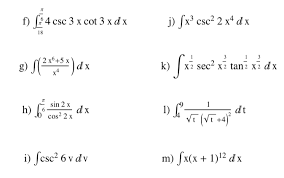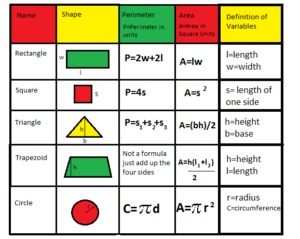The world around us is full of questions. Why does the sky change color? How do plants grow? What causes diseases, and how can they be cured? To answer these questions and many more, scientists use a structured approach known as the scientific method. It is the foundation of scientific discovery and plays a crucial role in how knowledge is built, tested, and refined.
In this article, we will explore the scientific method, break down each step, examine real-world examples, and understand why this method is essential not just for scientists but also for students, thinkers, and problem-solvers of all kinds.
What is the Scientific Method?
The scientific method is a systematic, logical process used by scientists to study the natural world. It involves observing, questioning, hypothesizing, experimenting, and analyzing data to draw conclusions. Importantly, the method is repeatable, evidence-based, and self-correcting.
Rather than relying on opinions or assumptions, the scientific method demands proof. If new evidence comes to light, previous conclusions can be challenged and revised. This process ensures that science remains dynamic, accurate, and progressive.
Why is the Scientific Method Important?
Before diving into the steps, it’s essential to understand why this method matters.
- Objectivity: It removes personal biases by relying on evidence.
- Reproducibility: Others can repeat experiments to confirm results.
- Progress: It helps build a body of knowledge that evolves over time.
- Problem-solving: The method can be used beyond science—in everyday decisions, engineering, business, and education.
The Steps of the Scientific Method
Although the scientific method may be adapted slightly depending on the field or study, it generally follows six core steps:
- Observation
Science begins with curiosity and observation. This step involves noticing something interesting or unusual in the environment.
Example: A student notices that bread kept in a warm place gets moldy faster than bread kept in a refrigerator.
At this stage, the goal is to identify a phenomenon that raises questions.
- Asking a Question
Once you’ve made an observation, the next step is to ask a specific, testable question.
Example: Does temperature affect how quickly mold grows on bread?
This question sets the direction for the investigation and helps narrow the focus.
- Forming a Hypothesis
A hypothesis is an educated guess or a predictive statement based on existing knowledge. It must be testable and falsifiable (able to be proven wrong).
Example: If bread is kept in a warmer environment, then mold will grow faster than on bread kept in a cooler environment.
This hypothesis can now be tested through experiments.
- Conducting an Experiment
This is where controlled experiments come in. An experiment tests the hypothesis by changing one variable (independent variable) while keeping others constant.
Key components:
- Independent Variable: The factor you change (e.g., temperature).
- Dependent Variable: The outcome you measure (e.g., rate of mold growth).
- Control Group: The standard for comparison (e.g., bread kept at room temperature).
Example Setup:
- Place slices of bread in three conditions: room temperature, refrigerator, and warm oven (turned off but warm).
- Observe and record mold growth daily for a week.
- Analyzing the Data
After the experiment, collect and analyze the data. This might include:
- Recording observations
- Creating charts and graphs
- Calculating averages or using statistical tests
Example: Bread in the warm oven developed mold in two days, room temperature bread in four days, and refrigerated bread in seven days.
Analyzing the results helps determine whether the hypothesis was supported or not.
- Drawing a Conclusion
Based on the data, you conclude whether the hypothesis was supported, rejected, or inconclusive.
Example: The experiment supports the hypothesis—warmer temperatures increase the rate of mold growth.
But science doesn’t end here. Conclusions often lead to new questions, further experimentation, or real-world applications.
Optional Step: Publishing and Peer Review
In professional science, once an experiment is complete, the findings are shared with the scientific community through peer-reviewed journals. Peer review ensures:
- Accuracy
- Credibility
- Reproducibility
This step is crucial for the advancement of science and for building trust in scientific results.
Real-Life Examples of the Scientific Method
Let’s take a look at how the scientific method is used in different fields:
Biology: Discovery of Antibiotics
- Observation: Alexander Fleming noticed mold killed bacteria in a petri dish.
- Question: What is this mold, and why does it kill bacteria?
- Hypothesis: The mold produces a substance that kills bacteria.
- Experiment: Tested the mold’s effect on bacterial cultures.
- Conclusion: Discovery of penicillin, a major medical breakthrough.
Physics: Falling Objects and Gravity
- Observation: Objects fall to the ground when dropped.
- Question: Do all objects fall at the same speed?
- Hypothesis: Heavier objects fall faster than lighter ones.
- Experiment: Galileo dropped balls of different weights from the Leaning Tower of Pisa.
- Conclusion: All objects fall at the same rate (ignoring air resistance).
Environmental Science: Climate Change
- Observation: Average global temperatures are rising.
- Question: Are human activities contributing to global warming?
- Hypothesis: Increased carbon dioxide from human activity causes temperature rise.
- Experiments/Data: Atmospheric measurements, climate models, ice core data.
- Conclusion: Strong evidence supports human-caused climate change.
Common Misconceptions About the Scientific Method
- It’s Always Linear
In reality, scientists often repeat steps, refine hypotheses, or revisit earlier stages. The process is iterative, not always linear.
- One Experiment Proves Everything
Science is about building evidence over time, not making instant truths. Many experiments are needed for strong conclusions.
- Only Scientists Use It
The scientific method is a valuable tool for anyone. Whether you’re baking, fixing a car, or solving a school project, you’re likely following similar steps.
Using the Scientific Method in Everyday Life
You don’t need a lab coat to use the scientific method. Here’s an example from daily life:
Problem: Your phone won’t charge.
- Observation: The battery is low, and it’s not charging.
- Question: Why isn’t it charging?
- Hypothesis: The charging cable might be broken.
- Experiment: Try a different cable or plug the original into another device.
- Data: If the new cable works, you’ve found the issue.
- Conclusion: The original cable is faulty.
This is a simple version of the scientific method in action!
Encouraging Students to Think Scientifically
In schools, encouraging students to use the scientific method:
- Promotes critical thinking
- Enhances problem-solving
- Builds research skills
- Fosters curiosity
Teachers can integrate this method through:
- Lab experiments
- Science fairs
- Open-ended questions
- Real-world investigations
Conclusion
The scientific method is more than just a set of steps—it is a mindset, a way of thinking and asking questions about the world. From school labs to space exploration, it remains the backbone of discovery and innovation.
Understanding how the scientific method works not only helps students excel in science but also equips them with lifelong skills for reasoning, learning, and making informed decisions.
So next time you’re faced with a problem—big or small—remember: observe, question, hypothesize, experiment, analyze, and conclude. That’s the scientific way




